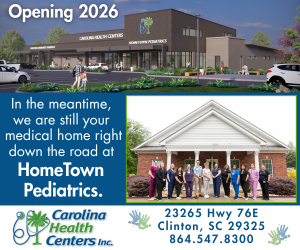Changing Demographics Shape Charleston, SC Multifamily Market
July 9, 2015Colliers International | South Carolina
Research & Forecast Report
Charleston | Multifamily
Q2 2015
Key Takeaways
> Charleston, South Carolina’s multifamily market continues to improve, supported by new jobs, a growing retiree population and shifting demographic profiles.
> Millennials and Empty Nesters are the target renters shaping the market with new developments aiming to meet residents’ changing needs.
> Construction activity is at record highs. Rental rates continue to climb. Residential growth driving suburban developments.
> Demand is expected to remain strong, but short-term absorption may not keep pace with unit deliveries. Occupancy is projected to remain high despite additional supply.
To download the complete report: Q2 2015 Charleston Multifamily Market Report.
Current Conditions
Activity was strong for Charleston’s multifamily market throughout 2014 and the momentum is expected to last through 2015. Occupancy rates and rent growth are on the rise indicating healthy market conditions, but as additional units deliver to the market, occupancy may rise if supply out-paces future demand.
The economy is improving as major investments and job announcements continue. Recently, two major announcements came from Volvo and Mercedez-Benz, which are collectively investing $1 billion and creating 3,300 jobs. As of April 2015, approximately 9,200 non-agricultural jobs were added to the Charleston-North Charleston, SC MSA, a 3.0% increase over a 12-month period, a growth trend expected to continue. The unemployment rate remains low and was down to 5.2% in April 2015 from 5.9% in January 2015.
While traditional renters fall in the 20- to 34-year-old age group, a group of older Empty Nesters continue to enter the pool of local apartment renters. Millennials, making up a greater component of the renter pool, are opting out of home ownership, and Empty Nesters, aided by an improving housing market, are selling their suburban homes and moving to the city. The flexibility of apartment life allows job mobility, appealing to young residents, while allowing older residents to vacation without the worry of home maintenance.
 Locally, the 20- to 34-year-old age group is growing and expected to increase by 2,859 individuals from 2015 to 2020, following an estimated addition of 8,667 individuals from 2010 to 2015. The 50- to 69-year-old age group is also expanding with an additional 8,222 individuals projected by 2020. These growing population sectors are contributing to the significant demand for multifamily developments, which is expected to continue in the coming years.
Locally, the 20- to 34-year-old age group is growing and expected to increase by 2,859 individuals from 2015 to 2020, following an estimated addition of 8,667 individuals from 2010 to 2015. The 50- to 69-year-old age group is also expanding with an additional 8,222 individuals projected by 2020. These growing population sectors are contributing to the significant demand for multifamily developments, which is expected to continue in the coming years.
Contributing to the growing younger population is Charleston’s up-and-coming technology hub, Charleston’s Digital Corridor, which is bringing new, young talent to the area, creating greater apartment demand. Nationwide, developers have shown interest in markets with growing tech industries as the sector is a significant employer of young adults.
Renters Influencing the Market
The changing preferences of the growing group of renters are shaping the look and feel of new apartment complexes, which sometimes resemble upscale hotels or resorts.
New developments are locating in city centers near jobs and entertainment or in proximity to marsh or waterways, providing easy access to outdoor recreation. Downtown developments are thriving as Millennials enjoy the live, work and play environment. Apartment amenities and common areas are becoming increasingly important as gathering places and provide an edge in attracting new residents.
> As many developers are incorporating smaller lofts and efficiency units in their complexes, common areas are being utilized for socializing with other residents, entertaining guests and often for work.
> Resort-like pools, fitness studios, pet wash, bicycle storage and internet connectivity are among the most popular amenities.
> Some apartments offer concierge services such as a dry-cleaning service and valet trash pick-up.
> More units include upgraded appliances and high-end finishes such as wood-like vinyl floors and stainless steel appliances, which offer a desirable modern appearance while others opt for sealed concrete floors or exposed ceilings.
Inventory
According to AptIndex the Charleston multifamily market is home to 32,904 apartment units in the Central, Goose Creek, James Island, Mount Pleasant, North Charleston, Summerville and West Ashley submarkets. The Summerville and West Ashley submarkets collectively make up half of the market’s inventory with 8,585 and 8,281 units, respectively.
Vacancy Rates
Growing demand contributed to the absorption of 443 units over a 6-month period from August 2014 to February 2015 despite significant new supply. The resulting market vacancy rate in February 2015 was down to 6.7% from 8.3% in February 2014, according to AptIndex’s most recent report. Summerville experienced the greatest activity with 249 units absorbed.
According to AptIndex’s March 2015 report, James Island holds the lowest vacancy rate at 4.0%, and Mount Pleasant has the highest vacancy rate at 9.7%. AptIndex predicts that future demand will fall short of new supply levels going into 2016, but expects occupancy levels to remain high.
A second source, MPF Research, confirms AptIndex’s analysis. According to MPF Research, the market vacancy rate was 5.0% at the end of the first quarter of 2015, down from 5.9% the previous year.
Rental Rates
Land and construction costs are on the rise yielding higher rental rates for new apartments and driving up average market rates. According to AptIndex, monthly rental rates for the market averaged $976 per unit, or $1.00 per square foot, in February 2015, increasing 8.2% in one year and 30.7% since 2010. Monthly rental rates averaged $959 per unit in August 2014 and $902 in February 2014. Average monthly rental rates for new and 1- to 5-year-old communities were $1,248 and $1,380 per unit, respectively. As of February 2015, same-unit rents increased 0.5%, or $4.43, since August 2014. Rent is expected to climb further, but at a slower pace than 2014 growth. Same-unit rent grew 4.9%, or $45.13, from February to August 2014.
The Mount Pleasant, James Island and Central Charleston submarkets house communities with the highest average monthly rental rates. Mount Pleasant experienced the greatest increase in rental rates from February 2014 to February 2015 with rental rates increasing from $1,214 to $1,372 per unit, a 13.0% gain, largely the result of new units being added to the inventory. Rental rates in James Island remain high averaging $1,184 per unit. Central Charleston rental rates averaged $1,076 per unit in February 2015, increasing 7.8% year-over-year.
According to AptIndex, rental rates increased for one-, two- and three-bedroom units throughout the market. Monthly rent averaged $907 for one-bedroom units in the market, increasing 7.6% over the previous year. Monthly rental rates for two- and three-bedroom units averaged $978 and $1,131, respectively, increasing 8.4% and 8.8%, respectively over the previous year.
New Development
Construction activity is significant, adding more units to the market inventory over the past twelve months than from 2010 to 2014 combined. Strong momentum continues as 3,700 units remain under construction as of February 2015, and with 5,785 units proposed, activity is not slowing down anytime soon. Since August 2014, 930 units were added to the existing inventory.
James Island, Mount Pleasant and West Ashley account for 83% of current multifamily construction. James Island was in the lead as of February 2015 with 1,103 units under construction. Mount Pleasant and West Ashley had 1,014 and 964 units, respectively, under construction. Development will continue into 2016 for Mount Pleasant and West Ashley, which account for 2,716 and 1,007 proposed units, respectively.
Central Charleston has experienced minimal construction activity in recent years, but represents 1,424 of the proposed units. The new developments in the Central submarket mirror the projected 1.3% population growth of the 20- to 34-year-old age group by 2020.
Recent Sales
Sales were robust in 2014 with over 20 multifamily communities comprised of 3,400 units throughout Charleston sold for $417 million according to Real Capital Analytics. The average price per unit in 2014 was $123,000. 2015 sales are set to be on pace with 2014. As of April 2015, six multifamily communities made up 1,242 units traded, valued at $156.9 million.
Current market conditions provide opportunities for investors and developers to acquire older, less desirable buildings and reposition them as new class A units. As land costs increase and available land options run scarce, redevelopment and renovations of older complexes or other property types will become more feasible and profitable than new development in this high barrier to entry market.
Market Outlook
The future of the multifamily market is promising as growing demand will support long-term supply. Rents will climb as new units deliver and occupancy increases. Demand previously surpassed new supply, but as new developments come online, demand is expected to fall short of supply, but only temporarily. Occupancy will decline slightly but remain high. The growing technology industry will add to the renter population, growing demand for apartments. New developments will continue to offer attractive amenities and features in an effort to meet the demands of the changing renter demographics. Overall, population growth, demographic shifts and the growing interest from retirees contribute to a positive long-term outlook for the Charleston market.
For more statewide commercial real estate news check out our market reports at: www.colliers.com/southcarolina/insights
To download the complete report: Q2 2015 Charleston Multifamily Market Report.
.
.


















